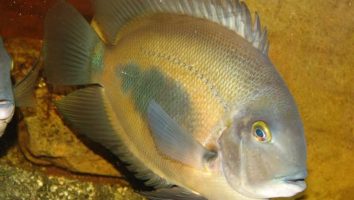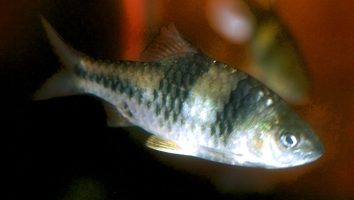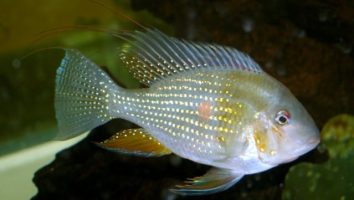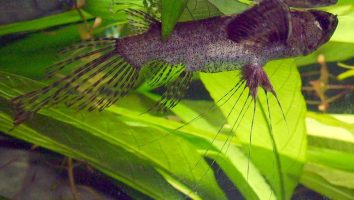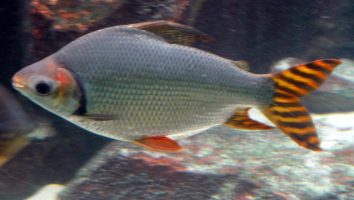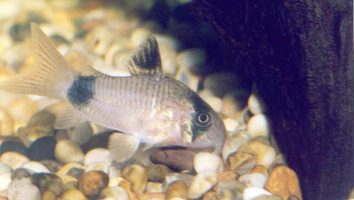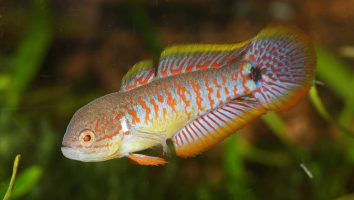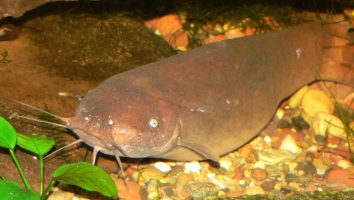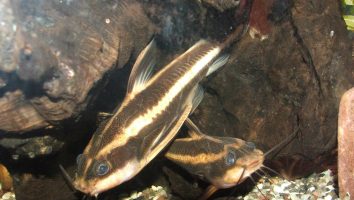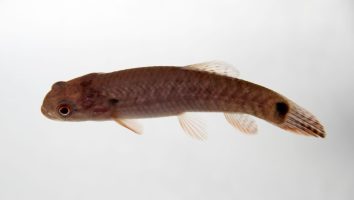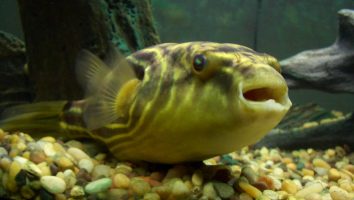The giant gourami is a beautiful freshwater fish that is popular in the aquarium trade. They’re relatively easy to care for and make a great addition to any tank.
However, there are a few things you need to know before you get one. In this guide, we’ll teach you everything you need to know about giant gourami care. You’ll learn about their diet, size, lifespan, and more!
Table of contents
Species overview
The giant gourami (scientific name: Osphronemus goramy) is a freshwater fish that’s native to Southeast Asia. It’s commonly found in Thailand, Malaysia, Indonesia, and Vietnam.
This fish prefers slow-moving waters with a lot of vegetation. This could be anything from swampy areas to rice paddies.
Giant gouramis are some of the largest freshwater fish in the world. They can grow up to 3 feet in length and can weigh up to 15 pounds!
Despite their size, these fish are actually quite peaceful. They are compatible with a wide variety of tank mates and make a great addition to most community tanks.
Appearance
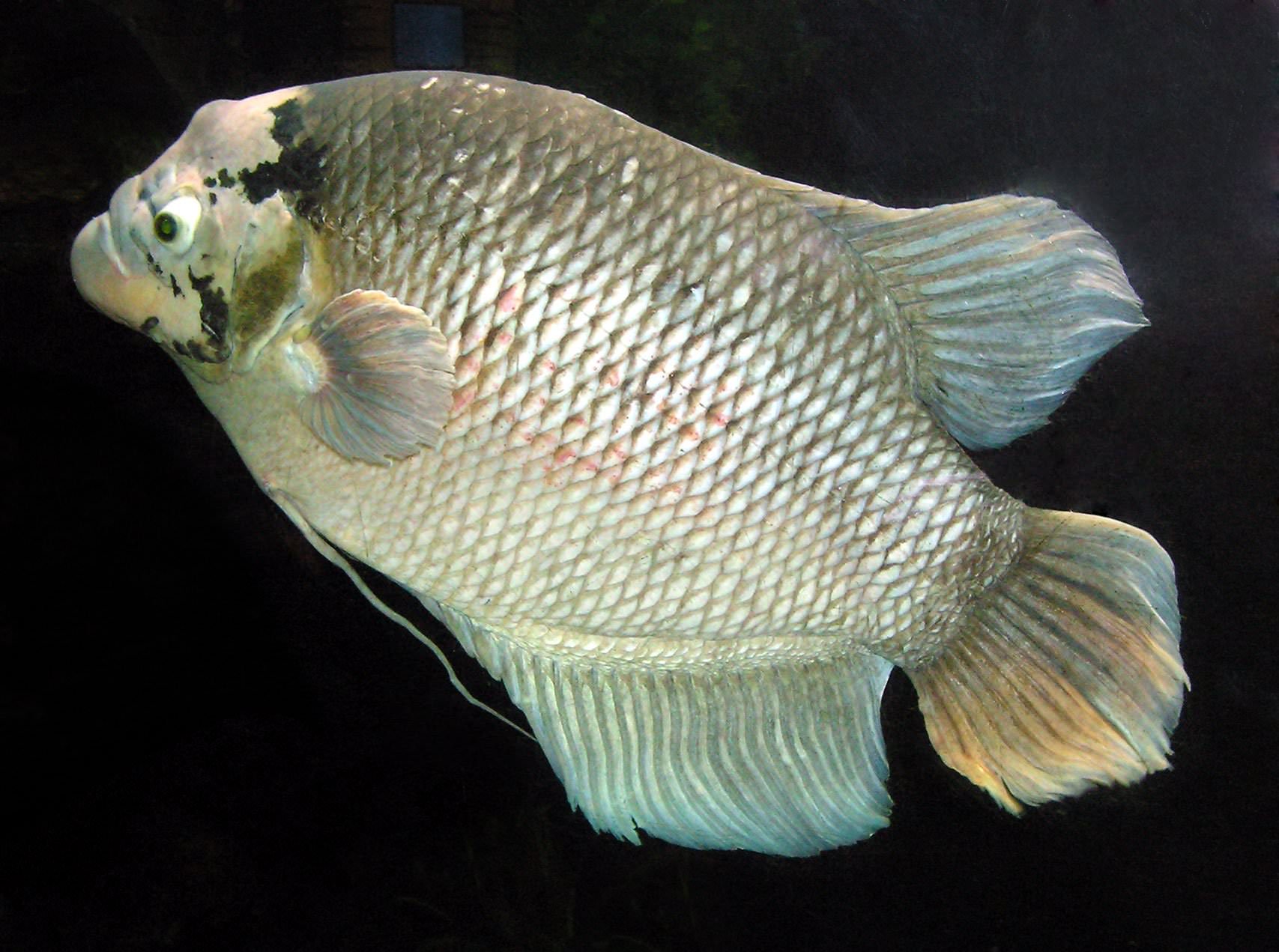
The Giant Gourami is a very large fish that can reach up to 3 feet in length! They have a very long and slender body that is covered in large, flat scales.
The coloration of this fish can vary quite a bit. They can be brown, green, orange, or even red. There is usually some sort of pattern on their body as well. This can be stripes, spots, or a marbled effect.
Their fins are very large and flowy. The dorsal fin starts at the middle of their back and extends almost to the end of their tail. The anal fin is similar in size and shape but starts a bit closer to the head.
Their caudal fin is very large and deeply forked. The pectoral fins are also quite large and start about two-thirds of the way back on their body.
Giant Gouramis have a very large head with a protruding lower jaw. Their eyes are quite small in comparison to the rest of their head. They have a long and thin antenna that extends from their forehead.
Lifespan
In captivity, giant gouramis have been known to live for up to 10 years, although the average lifespan is more like 5 to 7 years.
As with most fish, the lifespan of a giant gourami can be impacted by a number of factors. Poor water quality, for example, can lead to a shortened lifespan.
Giant gouramis are also very sensitive to changes in their environment. So, if you do need to make changes to the tank (like adding new plants or decorations), do it gradually to give them time to adjust.
Size
A full-grown giant gourami can reach lengths of up to 2 feet, making them one of the largest freshwater aquarium fish available. They are a slow-growing species, so it can take several years for them to reach their full size.
Tank
Tank Size
The minimum tank size for a single giant gourami is 125 gallons. If you want to keep more than one fish, you’ll need to add at least another 55 gallons for each additional fish.
Water Parameters
The giant gourami is a tropical fish that needs warm water to thrive. A temperature range of 76 to 82 degrees Fahrenheit is ideal.
pH levels should be between 6.5 and 7.5. These fish come from slow-moving waters, so they’re not used to a lot of water movement.
A filter is still necessary to keep the water clean, but don’t go overboard with the flow. A gentle flow is all that’s needed.
- Water Temperature: 76 to 82 degrees Fahrenheit
- pH Levels: 6.5 to 7.5
- Water Hardness: 5 to 15 dGH
- Alkalinity Levels: 4-8 dKH
What To Put In Their Tank
When it comes to setting up their tank, you have a few different options. The first is to go with a more naturalistic look. This can be accomplished by including a lot of plants, driftwood, and rocks.
Giant gouramis love to hide, so the more hiding spots you can provide the better. Driftwood and rocks can create a lot of great caves and nooks for them to explore.
Plants are also a great way to help these fish feel more comfortable. We recommend using a mix of live and fake plants. Live plants will help to oxygenate the water and provide a place for the fish to graze. Fake plants can be a great way to add some extra hiding spots (just make sure they’re securely anchored).
The second option is to go with a more minimalistic approach. This can be accomplished by using a sand substrate and keeping the decorations to a minimum.
A lot of aquarists who keep giant gouramis prefer this look since it allows them to better show off the fish. It also makes it easier to spot potential problems (like aggression or illness).
Common Diseases
The giant gourami is a freshwater fish that is native to Southeast Asia. These fish are relatively hardy and don’t fall ill often.
However, when they do get sick it’s usually due to one of two things: water quality or parasites.
The most common disease you’ll see in giant gouramis is ich. This is a parasite that manifests itself as white spots on the fish’s body.
If left untreated, ich can be deadly. However, it’s relatively easy to treat if you catch it early. The key is to maintain good water quality in your tank so your fish don’t get sick in the first place.
The other common disease you’ll see in giant gouramis is gourami iridovirus. This is a virus that is specific to gouramis and can be deadly.
There is no cure for this virus, so the best you can do is try to prevent it by keeping your fish in clean water and quarantining new fish before adding them to your tank.
Behavior & Temperament
Giant gouramis are one of the largest freshwater fish available to aquarium hobbyists. As such, they have a reputation for being a bit aggressive.
While it’s true that giant gouramis can be territorial with tank mates, they are typically not aggressive unless they feel threatened. These fish are actually quite docile and are known to get along with other peaceful fish.
The giant gourami’s peaceful reputation is due in part to its laid-back lifestyle. These fish are not known for being active. They spend most of their time hiding among the plants in their environment or just hanging out near the bottom of the tank.
When they are active, giant gouramis are slow and methodical swimmers. They don’t dart around like other fish, but rather glide through the water with ease.
Tank Mates
When it comes to finding the best tank mates for giant gouramis, the options are endless. These fish are peaceful by nature and can get along with just about any other species.
The only exception is other giant gouramis. It’s best to keep them in pairs or groups since they’re social fish. But, they can be kept with other species as well.
Giant gouramis are also slow-moving fish. This means that you can add tank mates that are fast and agile. The gouramis won’t be able to keep up, but they won’t care.
Some compatible species include:
- Neon Tetras
- Guppies
- Mollies
- Platies
- Swordtails
- Zebra Danios
- White Cloud Mountain Minnows
Breeding
Giant gouramis are not the easiest fish to breed in captivity. They’re very particular about their environment and require a lot of space. That being said, it is possible to successfully breed them if you’re willing to put in the effort.
The first step is to set up a breeding tank. It should be at least 200 gallons and have a water temperature between 78 and 82 degrees Fahrenheit. The water should also be soft and slightly acidic.
Then, you need to add plenty of hiding places. Giant gouramis are shy fish and need a lot of places to hide. Live plants also help to create a more natural environment.
When ready, add a group of 5 or 6 fish to the tank. It’s best to have more females than males. The ratio should be 3 females for every 1 male.
Once the fish have had a chance to acclimate, begin feeding them high-quality foods. Live foods are best, but frozen will also work.
After a few weeks, you should start to see the females getting larger. That’s a good sign that they’re ready to spawn.
When the time is right, the female will lay a large number of eggs. The male will then fertilize them. Once that’s done, the parents will usually eat the eggs. That’s why it’s so important to have plenty of hiding places in the tank.
To increase the chances of survival, you can remove the parents after they’ve laid the eggs. The eggs will hatch in about a week.
Once they hatch, the fry will need to be fed small live foods. You can also give them Newly Hatched Baby Brine Shrimp or finely ground flake food.
With some patience and care, you can successfully breed Giant Gouramis in captivity.
Conclusion
The Giant Gourami is a beautiful fish that is perfect for the fish keeper who wants a low maintenance pet. They are easy to care for and are very peaceful fish, making them ideal for community tanks.
While they are a bit more expensive than some other fish, we think they are definitely worth the price. If you’re looking for a new fish and are considering a Giant Gourami, we say go for it!

